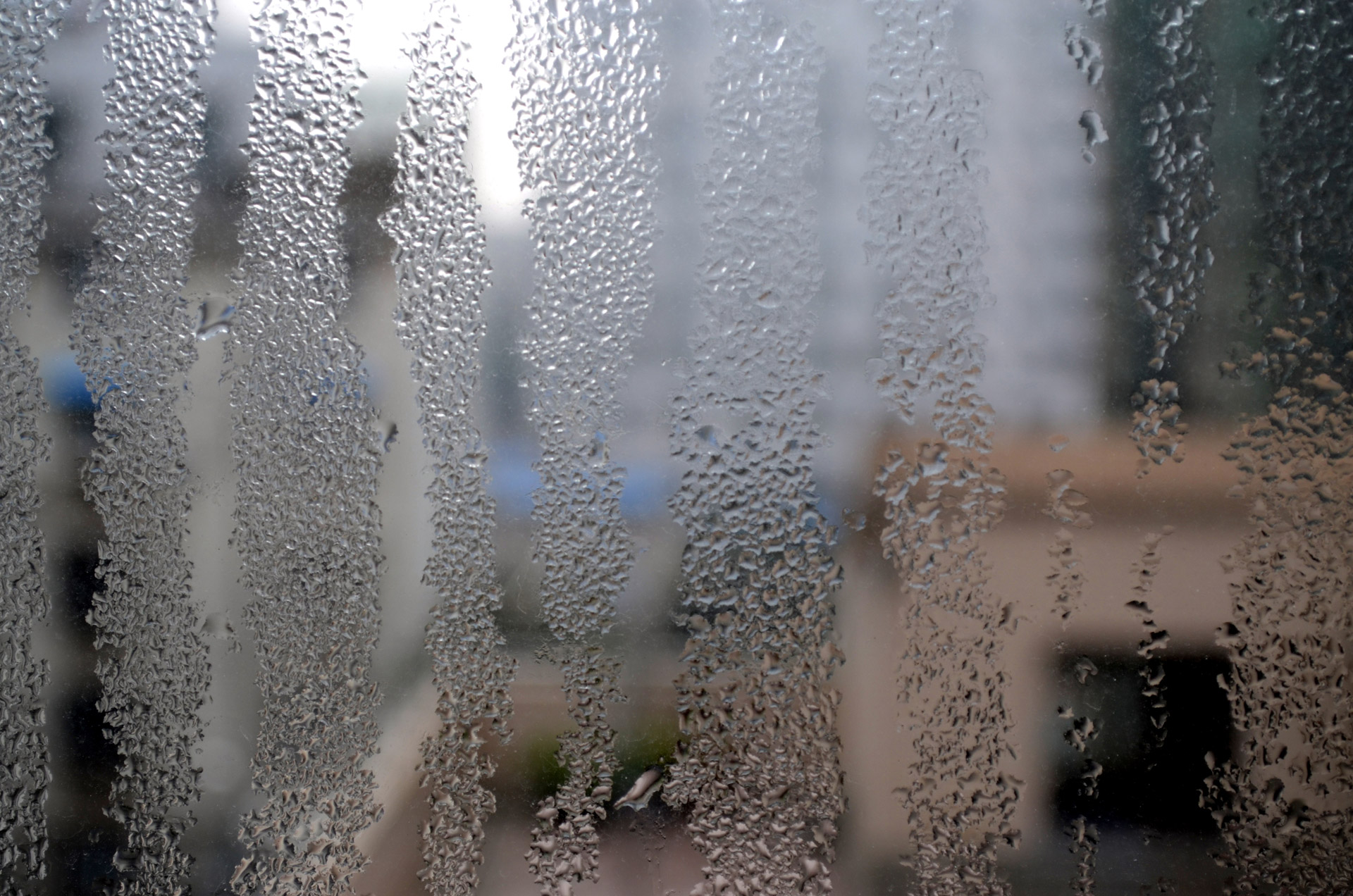From time to time, we receive queries about the appearance of external condensation on glass of replacement windows that we have installed. Our customers in Bury St Edmunds, Suffolk are always reassured when we explain that this phenomenon is a natural occurrence and not a fault in the glass or window product.
Moisture condenses out of the air onto a cold surface that is said to be below the dew point (i.e. temperature at which water vapour becomes liquid). The dew point varies with the air temperature and the amount of moisture it contains. Particularly in spring and autumn, the glass temperature can fall to a low level during the night and the dew point can be comparatively high in these seasons. The glass temperature can be below the dew point under these conditions and moisture can condense onto the surface.
In order to save energy, maintain a comfortable internal environment and satisfy building regulations requirements, the windows we fit in our homes are much more thermally efficient than in the past. With single glazing and older style double glazing, a large proportion of heat was lost to the outside through the glass. With modern low emissivity glass, more of the heat is kept inside and the outer pane is not heated as much.
The more thermally insulating the outer pane of glass is (and therefore the warmer the glass is then the temperature outside) then the greater the risk of condensation on the external surface. In northern European countries, where levels of thermal insulation are higher than in the UK, the phenomenon is understood and accepted. You may notice that not all of the panes of glass are affected by early morning condensation, even in the same window. Subtle differences in orientation and the position of objects outside the window can change the surface temperature of the glass to the point that one pane suffers and another does not. Any object such as a canopy or tree blocking off the window to a clear night sky will also reduce the effect.
There is not much that can be done to avoid the risk of condensation to the outside. In many cases the condensation does not last long. A little heat from the sun warms the outer glass enough to evaporate the moisture and a gentle breeze or wind will help.
Those people who have fitted Pilkington Activ™ self-cleaning glass may also notice that they get fewer occurrences. Pilkington Activ™ is as prone to condensation as any other glass, but the properties of this product means it does not allow the water to form beads on the surface of the glass. So you tend not see the effect to the same degree.
So to put it simply, surface condensation on the outside of glazing is a phenomenon that is occasionally seen at night and in the early hours of the morning on well-insulated glass in clear (cloudless) weather and when there is no wind. This is mainly caused by heat losses towards the clear sky. A plus point is the knowledge that your replacement windows are keeping the heat in as they are designed to do, proving that you have a superior insulating glass product.

